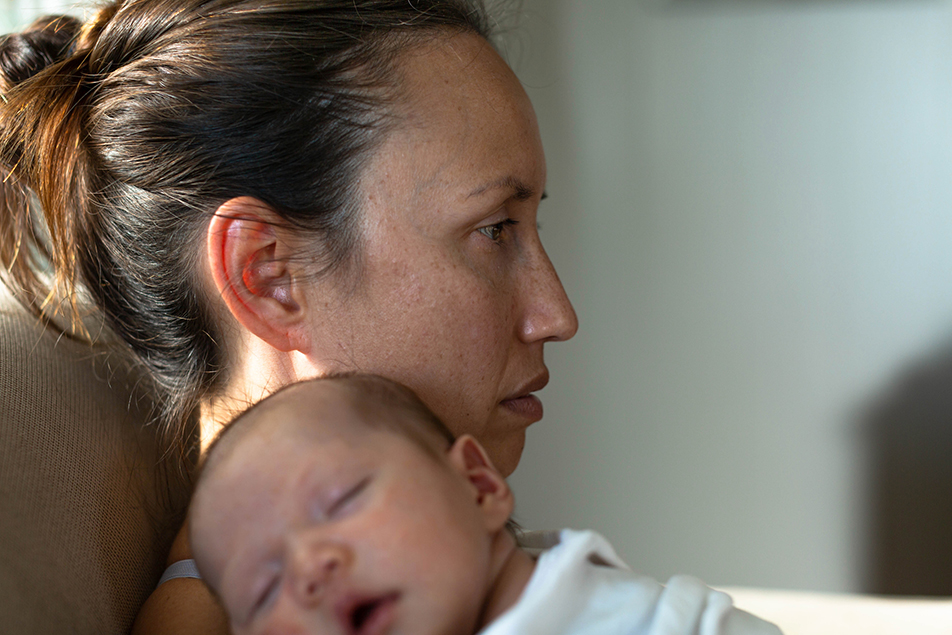
This post was written by Erin Norton, director of community outreach, Parkview Women’s & Children’s Hospital.
If you follow the news or are a sports fan, you might have heard about tennis star Serena Williams’ complications following childbirth. Earlier this year, she penned an essay describing her experience in which the development of blood clots required her to have three emergency surgeries following her cesarean section. After her discharge from the hospital, the ordeal initially left the world-class athlete unable to walk the length of her driveway.
Serena’s story highlights an important fact: According to the Centers for Disease Control and Prevention (CDC), Black women are three times more likely to die from a pregnancy-related cause than white women. Additionally, during the last couple of years, the United States has seen an increase in its overall maternal mortality rate, as COVID has stressed both individuals and systems. The problem is persistent, unjust and complex.
Celebrity stories, like Williams’, have brought needed attention to the issue. They aren’t, however, the only stories. In fact, the most common causes of pregnancy-associated death in Indiana may surprise you. What first comes to mind? Hemorrhage during childbirth? Strokes? Infections? If this is what you think of when you think of maternal mortality, you’re not alone. The fuller picture is more complicated.
Finding the causes of maternal mortality
In 2018, legislation was passed to mandate the formation of a Maternal Mortality Review Committee in Indiana. This multidisciplinary team includes members from all over the state. So far, they have reviewed all pregnancy-associated deaths that occurred in 2018 and 2019 and issued recommendations for improvement. The goal is to better understand the problem so that appropriate prevention measures can be developed and implemented.
A key piece of information to consider is the definitions of pregnancy-associated deaths compared to pregnancy-related deaths. Pregnancy-associated deaths occur during pregnancy or within one year of the end of the pregnancy. Pregnancy-related deaths have the same timeframe, but the death must be from a pregnancy complication or specifically related to the pregnancy. This is important to remember because the data may not be comparable, apples to apples, with other metrics.
So, what did they discover? First, simply, too many Hoosiers are dying. Second, many of these deaths could have been avoided. In 2019, 80% of pregnancy-associated deaths and 73.3% of pregnancy-related deaths were deemed preventable. What was the leading cause of death? Overdose, by a longshot. In 2018 and 2019, overdose, both accidental and undetermined intent, was the cause of 41 maternal deaths. Motor vehicle accidents (13), homicide (10), cancer (9) and suicide (7) round out the top five causes of death. During these same two years, stroke was the cause of two deaths.
Overdose as the leading cause of death for new moms is alarming. What is concerning for healthcare providers is when these deaths are occurring. The majority of them are happening between 43 and 365 days postpartum. This is beyond when most women are frequently following up with their obstetric care provider. If they are not engaged with a primary care or a mental healthcare provider, they are swimming alone in the ocean in a sense, unattached to those who typically connect those with substance use disorder to resources and treatment.
In general, many of these deaths are occurring outside of when the healthcare sector has the most influence. What does this mean? It is a community issue and community issues require community buy-in, support and solutions. Government, business, education, law enforcement, social services and healthcare must all work both independently and collaboratively to develop system-level solutions. We must create a community in which mothers don’t just live, they thrive. Minimally, this requires that families’ basic needs are met. To support long-term sustainable change, we need families to have robust social support and networks, a degree of financial security and assurance of physical safety. Healthcare providers can’t do this alone. It’s a complex and demanding problem, but one that demands our attention, effort and willingness to do hard things. Just ask the children who have lost their mothers.



